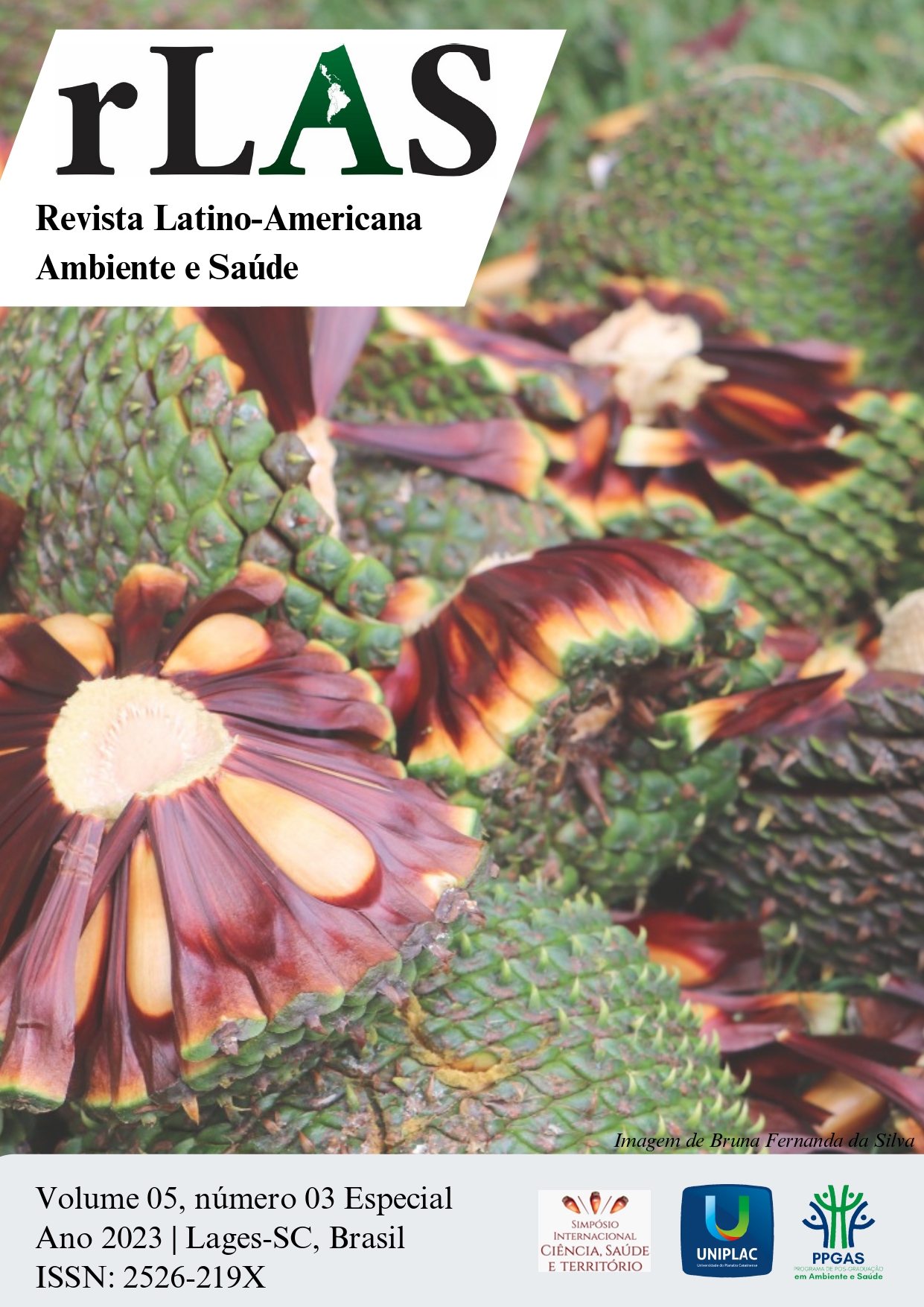Soil quality parameters in the presence of Trichoderma spp. in soybean crop
Keywords:
Glycine max (L.), macronutrients, organic matter, productivityAbstract
Soybean (Glycine max (L.) Merr.) is the main crop commercialized in the world agribusiness scenario, being Brazil the largest producer of this crop. Productivity success is related to the soil-plant-microorganism system. Understanding this dynamic helps in agricultural management and productivity. This work aimed to document, at different phenological stages of soybean plants, the relationship established between soil quality parameters and the Trichoderma spp. presence. The soil was treated with a consortium of Trichoderma spp. (ICB Nutrisolo Trichoderma, RS, Brazil) before soybean sowing. Analyzes were performed in the soil (no plant), flowering (63 days) and maturation (152 days) periods. Species of Trichoderma were identified in the rhizosphere and endophytic form at 63 and 152 days, respectively. A greater availability of phosphorus, manganese, boron and organic matter in soil was observed at 63 days evaluation. Therefore, it is possible to establish a relationship between the presence of Trichoderma spp. and the increase of nutrients in the soil. This fact characterizes the use of this fungus as a soil fertility optimizer.
References
BAUGH, C. L.; ESCOBAR, B. The genus Bacillus and genus Trichoderma for agricultural bio-augmentation. Rice Farm Magazine, v. 1, p. 1-4, 2007.
BEHERA, B. C. et al. Diversity, mechanism and biotechnology of phosphate solubilising microorganism in man grove - A review. Biocatalysis and Agricultural Biotechnology, v. 3, p. 97-110, 2014.
BOLAN, N.S. et al. Influence of low molecular-weight organic acids on the solubilization of phosphates. Biology and Fertility of Soils, v. 18, p. 311-319, 1994.
BONONI, L. et al. Phosphorus-solubilizing Trichoderma spp. from Amazon soils improve soybean plant growth. Scientific Reports, v. 10, article 2858, 2020.
BORKERT, C. M. Manganês. In: FERREIRA, M.E.; CRUZ, M.C.P. (Eds.). Micronutrientes na agricultura. Piracicaba: Potafos/CNPq, 1991. p. 173-189.
CONTRERAS-CORNEJO, H. A. et al. Trichoderma-induced plant immunity likely involves both hormonal- and camalex independent mechanisms in Arabidopsis thaliana and confers resistance against necrotrophic fungus Botrytis cinerea. Plant Signaling & Behavior, n. 6, v. 10, p. 1554-1563, 2011.
GARCÍA-LÓPEZ A. M.; AVILÉS, M.; DELGADO, A. Plant uptake of phosphorus from sparingly available P- sources as affected by Trichoderma asperellum T34. Agricultural and Food Science, v. 24, p. 249–260, 2015.
HARMAN, G. E. et al. Trichoderma Species - Opportunistic, Avirulent Plant Symbionts. Nature Review Microbiology, v. 2, p. 43-56. 2004.
LUMIBAO, C. Y. et al. Rhizosphere microbial communities reflect genotypic and trait variation in a salt marsh ecosystem engineer. American Journal of Botany, n. 7, v. 6, p. 1- 9, 2020.
MALAVOLTA, E. et al. Deficiências e excessos minerais no feijoeiro (Phaseolus vulgaris L., cv. Carioca). Anais da Escola Superior de Agricultura Luiz de Queiroz, n. 7, v. 2, p. 701- 718, 1980.
MANZAR, N. et al. Trichoderma: advent of versatile biocontrol agent, its secrets and insights into mechanism of biocontrol potential. Sustainability, n. 4, v. 19, p. 3210-3390, 2022.
MOREIRA, M. A. et al. Doses de boro em paricá combinada com a utilização de isolados de Trichoderma spp. Anais da Semana de Ciências Agrárias e Jornada de Pós-Graduação em Produção Vegetal, 2019.
OLIVEIRA JUNIOR, J. A. D.; MALAVOLTA, E.; CABRAL, C. P. Efeitos do manganês sobre a soja cultivada em solo de Cerrado do Triângulo Mineiro. Pesquisa Agropecuária Brasileira, n. 35, v. 8, p. 1629–1636, 2000.
SHORESH, M.; HARMAN, G. E, MASTOURI F. Induced systemic resistance and plant responses to fungal biocontrol agents. Annual Review of Phytopathology, v. 48, p. 21– 43, 2010.
SOUZA, M. S. Desempenho de soja orgânica com uso de Trichoderma harzianum e condicionador de solo. Dissertação (Mestrado em Agroecossistemas) no Programa de Pós- Graduação em Agroecossistemas (Área de Concentração: Manejo de Culturas Anuais em Agroecossistemas) - Universidade Tecnológica Federal do Paraná, 2020.
STEWART, A.; HILL, R. Chapter 31 – Applications of Trichoderma in plant growth promotion. In: Biotechnology and biology of Trichoderma. GUPTA V. K. et al. (Eds). 2014. p. 415-428.
WAGHUNDE, R. R.; SHELAKE, R. M.; SABALPARA, A. N. Trichoderma: a significant fungus for agriculture and environment. African Journal of Agricultural Research, n. 1, v. 22, p. 1952-1965, 2016.


